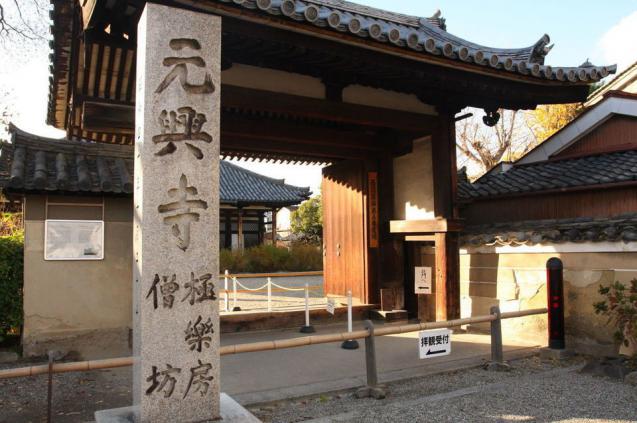
Gango-ji is an ancient Buddhist Temple located among the narrow streets of the Naramachi district of Nara. It is a UNESCO World Heritage Site and known to be one of the most ancient temples in Japan.
Gangoji Temple was originally established as Hokoji Temple, also known as Asuka Temple (Asukadera) due to its location. When the capital moved to Heijo Kyo (Nara) in 710, Hokoji followed suit in 718 and was rebuilt at great expense and renamed Gangoji.
Gangoji was one of the seven great temples of the Heian Period in Nara: Daianji, Gangoji, Horyuji, Kofukuji, Saidaiji, Todaiji and Yakushiji.
Things to see
Gangoji is known for its Gokuraku-do or the Hall of Pure Land and Mandala Hall, a designated National Treasure and the Zen Shitsu.
Treasure House houses a miniature Five Storied Pagoda (Goju-shoto), an object build as a scale model for many pagodas built in Nara. It is the only five-storied pagoda to have been built in Japan during the Nara Period and is considered a National Treasure.
There is a 2 storey building that houses other historic treasures that includes statues, paintings, ritual objects and wooden beams from earlier buildings in the site. The 5 storey pagoda is surrounded by rare Buddhist statues from India.
The grounds of Gangoji are pleasant to stroll and contain a number of stone lanterns and grave markers.
The nearest bus stop to Gangoji Temple is Fukuchiin-cho on bus routes #50, #51, #53, #82 and #92 to JR Nara Station or Kintetsu Nara Station. From there, Gangoji is a 15 minute walk south of Kintetsu Nara Station and around 20 minutes east on foot from JR Nara Station.
It is open 9:00 to 17:00, entry is until 16:30
No closing days
Admission fee is 500 Yen
Submit Itinerary
Signup
- Sign Up
- Already a member? Login Now!
